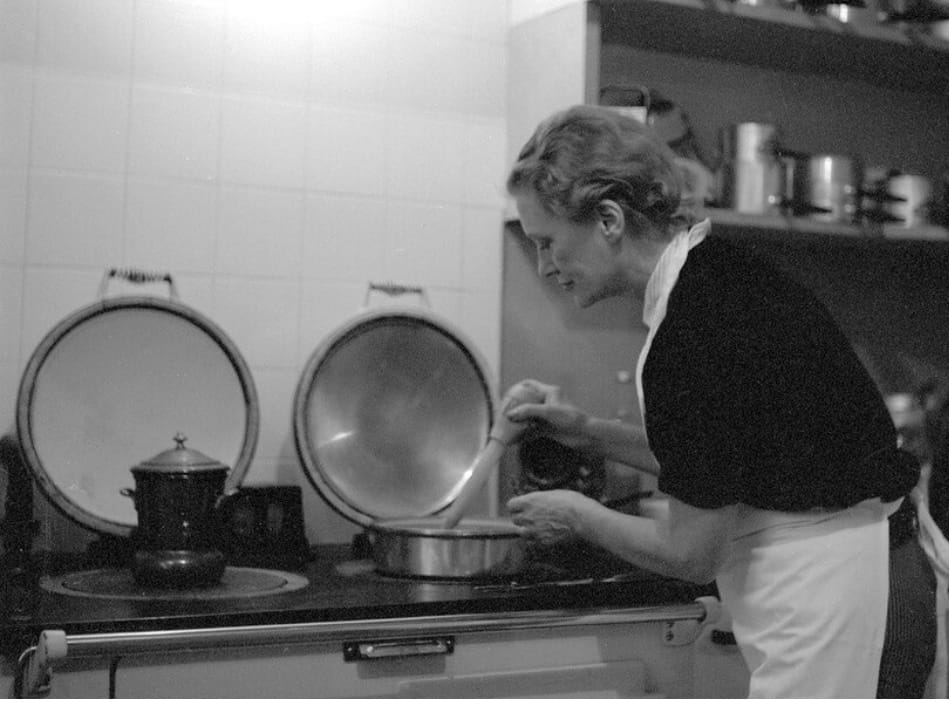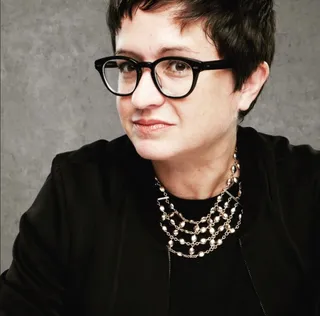The Dragon from Chicago
Big bravery edition, starring female war correspondents and a seven-months pregnant fencer.

Boy, oh boy, do I have a treat for you and your to-be-read piles today! Ladies and gents, I am sharing an interview I did with Pamela D. Toler, whose latest – and I'm sure greatest – book The Dragon from Chicago comes out on Tuesday, August 6. It's the captivating story of Sigrid Schultz, one of the earliest reporters to warn Americans about the rising threat of the Nazi regime. So not only is this a tale about a real badass broad, it's timely too!
About Pamela: Armed with a PhD in history, a well-thumbed deck of library cards, and a large bump of curiosity, author, speaker, and historian Pamela D. Toler translates history for a popular audience. She goes beyond the familiar boundaries of American history to tell stories from other parts of the world as well as history from the other side of the battlefield, the gender line, or the color bar. Toler has authored ten books of popular history for children and adults, including Heroines of Mercy Street: Real Nurses of the Civil War and Women Warriors: An Unexpected History. Her work has appeared in American Scholar, Aramco World, Calliope, History Channel Magazine, MHQ: The Quarterly Journal of Military History, Ms., Time.com and The Washington Post and she has been featured in National Geographic. And also? She's just an awesome human being.
Let's get this party started...
Q: How and when did you first learn about Sigrid Schultz? Tell us who she was and what it was about her story that you found so appealing.
A: Sigrid Schultz literally arrived in my inbox. One morning, an account of a historical treasure hunt popped up in my newsfeed. An architectural salvage vendor had found seventy-five glass plate photographic negatives in the
attic of an old house in the Ravenswood neighborhood of Chicago. Most of the pictures were of a beautiful young woman, a small child, and a very big dog. The salvage vendor went on a search to find out more. He learned that the little girl was named Sigrid Schultz. The young woman was her mother, Hedwig. And the photographs were taken by her father, Hermann, who was a Norwegian portrait painter who had immigrated to the United States. Sigrid Schultz went on to become a groundbreaking foreign correspondent and perhaps the first woman to head a foreign news bureau for a major American newspaper. It didn’t take long for me to find the bare facts of her life: Schultz was the Berlin bureau chief for the Chicago Tribune from 1925 to 1941 and one of the first American reporters to warn her readers about just how dangerous the Nazis were. I was hooked.
Q: Finding an appealing story is one thing. Deciding to write an entire book about it is something else entirely. After writing a book about great female warriors in history, what made you decide that you not only wanted to write a book about Schultz, but write a book about her now?
A: Soon after I started working on The Dragon From Chicago, I was trying to articulate what my books about women have in common. I thought that it surely had to be something more than war, though that is definitely a recurring subject. A wise friend of mine, novelist Evelyn Herwitz, said, with no hesitation, “They’re about courage.” The “duh” was implied. And it’s true. Schultz’s story is about courage in a time when courage was dangerous. It is a story about the rise of the Nazis, and yet it felt compellingly modern. Her story includes working around glass ceilings (a term she wouldn’t have used even if it were around at the time), keeping the news flowing despite tightening controls on the media, outwitting Nazis in Germany, standing up against pro-Nazi sympathizers at home, and dealing with claims of “fake news” (a term she used more than once) on both sides of the Atlantic. Did I mention I was hooked?
Q: You did, indeed! How long did the research for the book take and what did it entail?
A: I spent a year writing the proposal, which included some of the basic research. Once I had a contract, it took me another four years to research and write the book: I can’t really unwind how much of that was research and how much was writing because they are always intertwined for me. And in the case of this book, I went back to the archives to do some additional research after I turned in the manuscript, looking for an answer I didn’t have. (I found it!)
Researching this book included doing what felt like a DIY Master’s degree on Germany in the period from 1914 through 1945—definitely NOT my academic field.
Building on that, I spent a lot of time in the archives, which is always thrilling. I read all of Schultz’s by-lined articles in the Chicago Tribune from 1919 through the 1960s, and a lot of other old newspapers to put her writing in context. I read every memoir by a foreign correspondent from the period that I could lay my hands on. I went down a lot of rabbit holes—some of which fed the final book, some of which enriched my understanding of the period, and some of which were simply fun. (I now know more about trench coats than I ever thought possible.)
Q: As you looked into Sigrid Schultz’s life, what were some things that 1. pleasantly surprised you, 2. absolutely gobsmacked you, and 3. truly inspired you about her?
A: 1. I was pleasantly surprised by Schultz’s gift for friendship, and the fact that she continued to make new, often younger, friends through the end of her life. The mini-biographies that I consulted for the book proposal suggested that she was difficult and isolated in her old age. Simply not true. Okay, maybe she was difficult. 2. It’s a small thing, but I was gobsmacked over and over by her casual correspondence with people whom I had long admired, like novelist Paul Gallico and dancer and choreographer Ted Shawn. Those letters made my fan girl heart flutter. 3. I was, and am, inspired by her courage. In fact, as I got deeper into the book I found myself wondering whether I would be as courageous as she had been.
Q: Who nicknamed her The Dragon from Chicago and why?
A: Hermann Göring, Hitler’s right hand man, called her “that dragon from Chicago” after she called him out in front of the entire foreign press corps for engineering efforts to entrap unwary journalists with dangerous, and possibly fake, news stories. She wore the nickname with pride.
Q: How did her exploits compare to her male reporting counterparts? What would she think of the state of journalism today?
A: William Shirer, the author of The Rise and Fall of the Third Reich, who was himself stationed in Berlin from 1934 to 1940, summed it up best: “No other American correspondent in Berlin knew so much of what was going on behind the scene as did Sigrid Schultz.” Schultz believed passionately in the importance of accuracy in reporting. If you couldn’t verify what a source told you, you didn’t have a story. I think she would be appalled about some of what passes as journalism today.
Q: What do you hope readers take away from the book, especially in this polarizing political moment?
A: The realization that democracy must be tended to survive. And that a free and engaged press is a critical element in that.
Q: Anything else on your mind today?
A: Pizza and beer.
That's my girl!
For more on Pamela, please visit her website www.pameladtoler.com and her blog www.historyinthemargins.com. You can also find her on Bluesky (@pdtoler.bsky.social), and Threads and Instagram (@pamelatolerauthor). And, of course, please consider pre-ordering The Dragon from Chicago online or from your favorite local independent bookseller!
Writing prompt: Reflect on this past week. Write about what pleasantly surprised you, absolutely gobsmacked you, and truly inspired you.
The Expectation of Tomorrow

I can only imagine what it must have been like for war correspondents like Sigrid Schultz to decompress after covering the rise of the Nazi regime and the horrors of World War II. When you've seen utter destruction and the absolute worst of humanity, then what does that do to your spirit and psyche? How can you expect that things will ever return to normal...whatever normal is?
For war photographer Lee Miller, the answer was to pour herself into an absolute orgy of cookbook collecting, cooking, and entertaining. Miller owned at least 2,000 cookbooks and had a dedicated room for them in her home in Southern England. She also cooked competitively, recreating to the best of her ability the flavors she sampled from her global travels. There's a fascinating, but at times sad, book about this part of her life, where she invented dishes like cauliflower breasts, or champagne and camembert soup and served them to her close circle of friends. After what she had just been through, this devoted research and recipe testing seemed to sustain her, especially when she was serving up meals for weekend guests. One of her recipes was for something called Persian Carpet. It's essentially a boozy citrus dish, flecked with decorative flowers so it looks like...a Persian carpet. My favorite part of this recipe is that she notes that she serves this on a silver platter that she stole from Hitler's residence, Berchtesgarten.
"It has Hitler's initials and an ugly eagle on it – no one notices..." she wrote.
Anyway, here's how you make it.
Ingredients: 2 cups granulated sugar; 6 oranges sectioned into filets; 1 cup of orange peel cut into matches; 1 cup of water; splashes of orange blossom water; rose petal jam; creme de Cassis; Grenadine; candied violets; candied rose petals.
Method: In a saucepan combine sugar, water and the orange peel and let simmer for about ten minutes until soft and translucent. Strain off peel and pour over orange sections with membranes removed. Set to chill. Then, drain off orange syrup and arrange on silver platter. Dot with rose petal jam and sprinkle with orange blossom water. Then dribble cassis and grenadine, taking advantage of the two colors and decorate with ten or twelve candied violets and candied roses.
Endnotes

What inspired me: Egyptian fencer Nada Hafez announced that she competed at the Olympics while seven months pregnant. When I was seven months pregnant, I'd get winded grocery shopping, so kudos to Hafez for showing the world what a total badass she is.
What entertained me: The Olympics Opening Ceremony in all its glorious Frenchness. I mean, they rang Notre Dame's bells for the first time since the 2019 fire. They had a metal band rocking out with oodles of headless Marie Antoinettes on the Conciergerie (and it definitely worked). They had so many glorious, dreamy nods to French history and culture throughout, culminating with the Olympic cauldron/hot air balloon that rose from the same spot of the first manned hydrogen balloon flight in 1783. And then there was Celine Dion, singing (SINGING!!!) Edith Piaf's "L'Hymne a l'amour" on the Eiffel Tower. I...had something in my eye by the time she was done.
What made me swoon: Dior made some stunning gowns for the Opening Ceremony. There was the feathery showgirl number for Lady Gaga, the gilded feather minidress for Aya Nakamura, the elegant French flag dress for mezzo soprano Axelle Saint-Cirel, and that jaw-dropping gown full of thousands of pearls and fringe that Celine Dion wore for her big comeback gig. Just beautiful, beautiful work. Bravo to them!
Where I hope you'll donate: We're at the time of year when kids are starting to go back to school. Teachers are woefully underpaid, and still find themselves paying for classroom supplies out of pocket. Why not look up a teacher wish list in your town and pick a few items to help them out? I think it would be an A+ move.
Paige Bowers Newsletter
Join the newsletter to receive the latest updates in your inbox.




